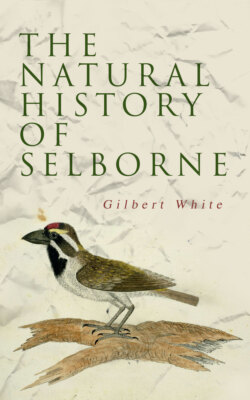Читать книгу The Natural History of Selborne - Gilbert White - Страница 19
На сайте Литреса книга снята с продажи.
LETTER XIV.
ОглавлениеTable of Contents
Selborne, March 12th, 1768.
Dear Sir—If some curious gentleman would procure the head of a fallow-deer, and have it dissected, he would find it furnished with two spiracula, or breathing places, besides the nostrils; probably analogous to the puncta lachrymalia in the human head. When deer are thirsty they plunge their noses, like some horses, very deep under water, while in the act of drinking, and continue them in that situation for a considerable time: but, to obviate any inconveniency, they can open two vents, one at the inner corner of each eye, having a communication with the nose. Here seems to be an extraordinary provision of nature worthy our attention, and which has not, that I know of, been noticed by any naturalist. For it looks as if these creatures would not be suffocated, though both their mouths and nostrils were stopped. This curious formation of the head may be of singular service to beasts of chase, by affording them free respiration: and no doubt these additional nostrils are thrown open when they are hard run. Mr. Ray observed that at Malta the owners slit up the nostrils of such asses as were hard worked: for they, being naturally straight or small, did not admit air sufficient to serve them when they travelled, or laboured, in that hot climate. And we know that grooms, and gentlemen of the turf, think large nostrils necessary, and a perfection, in hunters and running horses.
Oppian, the Greek poet, by the following line, seems to have had some notion that stags have four spiracula:
“Τετραδυμοι ρινες, πίσυρες πνοιασιι διαυλοι.”
“Quadrifidæ nares, quadruplices ad respirationem canales.”
Opp. Cyn. Lib. ii. 1. 181.
Writers, copying from one another, make Aristotle say that goats breathe at their ears; whereas he asserts just the contrary: “Άλκμαίων γαρ ούκ άληθη λέγει, φάμενος άναπνειν τας αίγας κατα τα ωτα.” “Alcmæon does not advance what is true, when he avers that goats breathe through their ears.”—“History of Animals.” Book I., chap xi.
